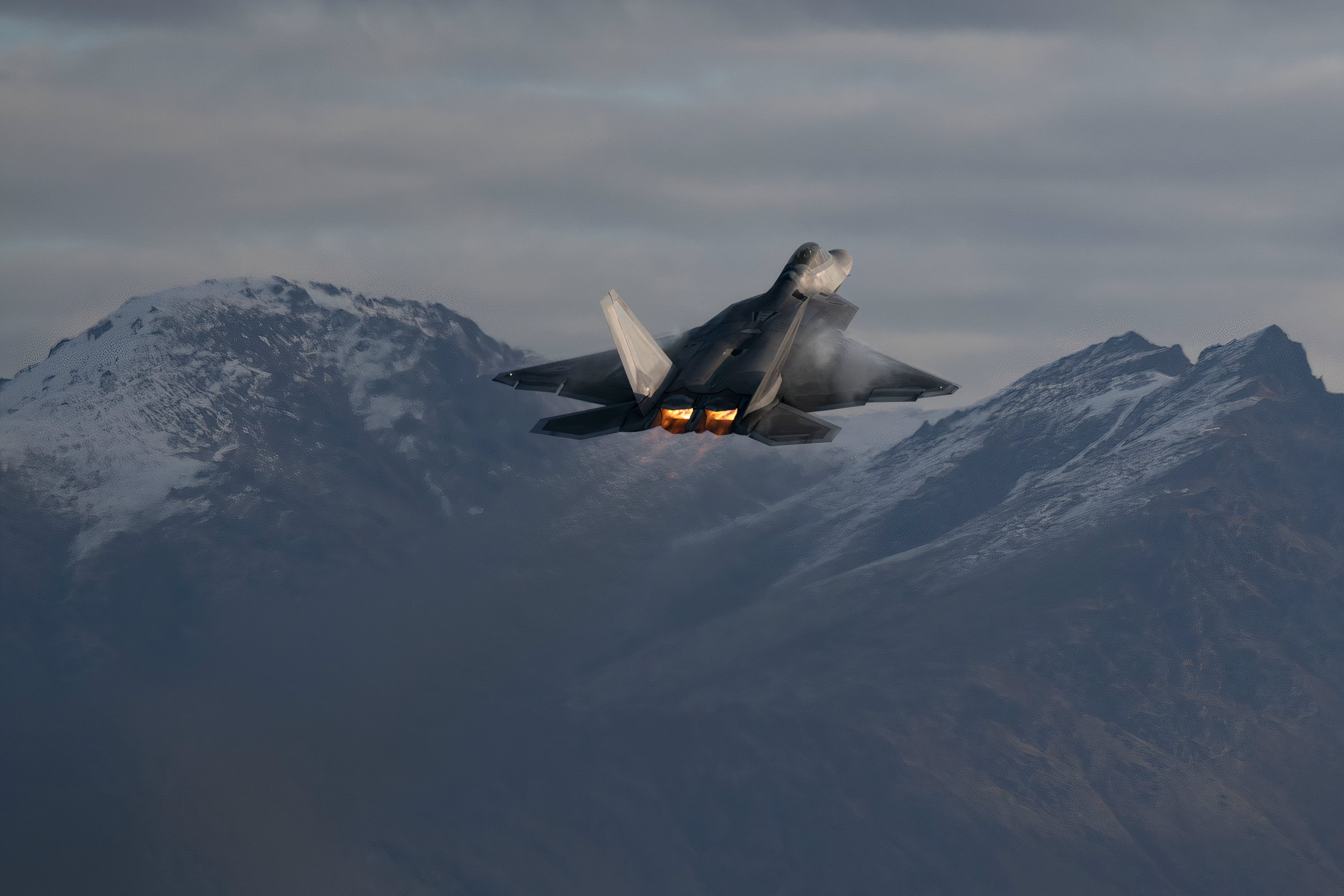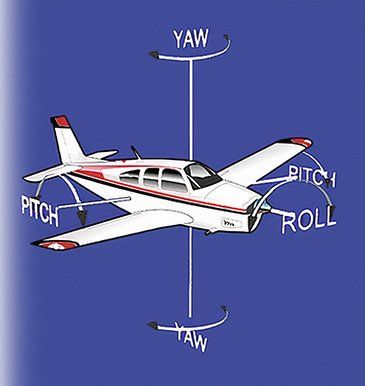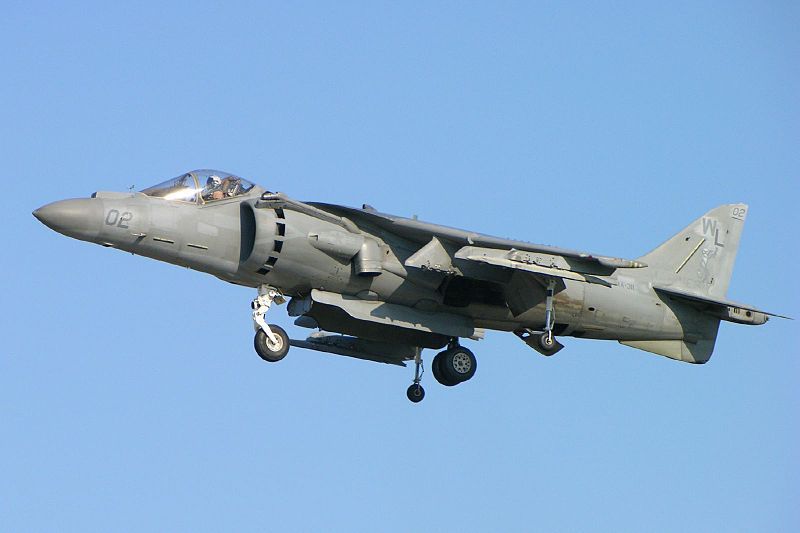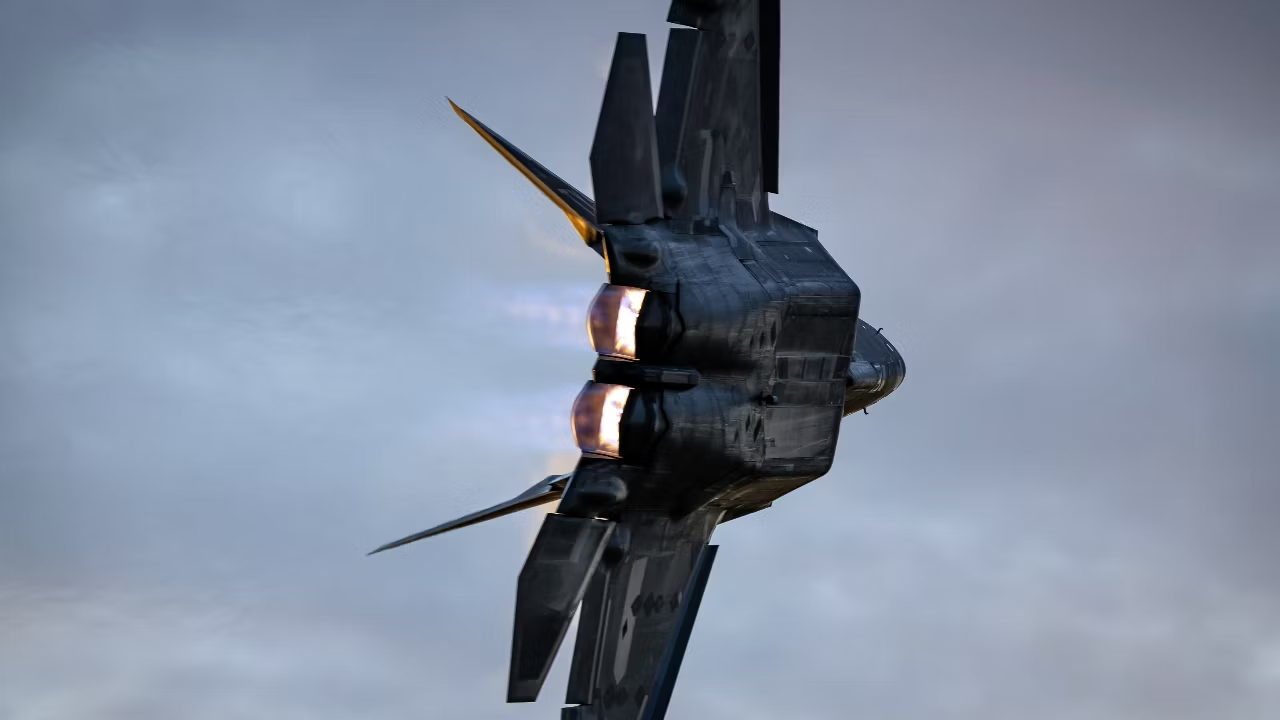Of all modern day fighter aircraft, no one can deny that Lockheed Martin’s F-22 Raptor is one of the best fighter aircraft ever produced. While the F-22 is best known because of its use of stealth technology and being the world’s first fifth generation fighter, there is one other aspect of the F-22 that is just as revolutionary as its stealth technology, its thrust vectoring nozzles.
The design of aircraft exhaust nozzles
The exhaust nozzles on an aircraft are the part of the engines where the exhaust gasses are expelled. They are tapered to increase the velocity of the exhaust coming out of the engine, and they can be either fixed or variable nozzles, depending on the design of the aircraft. Most fighter aircraft have variable nozzles, which means they are able to adjust their diameter. This allows the aircraft to maximize the performance of the jet engine across all possible throttle settings.
As the throttle setting is increased on these aircraft, the diameter of the nozzle is decreased and when the throttle setting is decreased, the nozzle opens up accordingly. These nozzles come at the cost of extra weight from moving parts and the actuators that are required to operate the nozzles. In most cases, engineers avoid adding weight to aircraft in the design process, but in fighter aircraft, the performance gained is often worth the penalty of the extra weight.
On larger, subsonic turbine engine aircraft, such as the aircraft that airlines fly, the exhaust nozzles are a fixed diameter that are engineered to provide the highest efficiency at the most common throttle settings while saving the weight involved with having an adjustable nozzle.
Thrust vectoring and its early uses
According to NASA, the definition of thrust vectoring is defined as “The ability to change the angle of the thrust”. The F-22 Raptor is not the first aircraft to utilize thrust vectoring. One example of thrust vectoring is the AV-8B Harrier.
AV-8B Harrier
The Harrier is used by the United States Marine Corps and Navy as a fighter aircraft and is an aircraft that can take off and land vertically. This was accomplished by having a unique set of exhaust nozzles on the sides of the aircraft that could rotate downward. This downward thrust was sufficient to lift the aircraft off the ground vertically. Despite being introduced in the mid-1980’s, this aircraft is still used by the United States military to this day.
The F-22’s thrust vectoring
The F-22 Raptor has variable nozzles at the tail of the aircraft, similar to that of a traditional fighter aircraft. These nozzles have the additional edge of being able to direct the exhaust gasses up and down. These nozzles are the heart of thrust vectoring on the F-22 aircraft, and they are part of why it is such a lethal aircraft.
When the Raptor’s exhaust nozzles are adjusted up and down, they push the tail of the aircraft in an opposite direction. When they are used, they augment the aircraft’s elevators in controlling the aircraft’s pitch attitude. These nozzles are used in addition to the ailerons, rudders, and elevators to control the aircraft.
Photo: U.S. Department of Transportation
On the F-22, these nozzles can move twenty degrees in either direction. The thrust vectoring system on an F-22 is also fully automated by the flight control computer in the airplane, which means that the pilot does not have any additional inputs or levers that need to be used to make the nozzles move.
When the pilot moves the control stick in the direction that the pilot desires to fly, the airplane’s flight control computer adjusts the flight control surfaces and the exhaust nozzles as necessary to make it happen. This allows the pilot to focus on other aspects of the flight and it also provides for safer operation because the computer will not allow the pilot to exceed the aircraft’s structural limitations.
Another benefit of thrust vectoring is that the effectiveness of the nozzles isn’t reliant on airflow over the control surface to be effective. Traditional aircraft control surfaces are essentially a lever that uses pressure from the air flowing over them in flight to move the aircraft. This means that at low speeds or at high altitudes, where the air is less dense, there is less pressure for those surfaces to gain leverage, which makes them less effective. Thrust vectoring nozzles don’t have this issue because they use the exhaust gasses that are produced by the engine and are not reliant on the surrounding atmosphere.
One other difference that is notable for the exhaust nozzles on the F-22 Raptor is that they are not round. The rectangular nozzles on the F-22 are solely for the purpose of reducing the radar signature of the back of the aircraft and are not a requirement for thrust vectoring.
Thrust vectoring in use against its peers
The combination of the F-22’s thrust vectoring nozzles and the sheer power of its two Pratt and Whitney F119 engines make the F-22 an extremely maneuverable and formidable foe for any aircraft. The F-22 has time and time again been able to outmaneuver the General Dynamics F-16, which is smaller than the F-22, and is a very maneuverable aircraft in its own right. The thrust vectoring technology of the F-22 allows the larger F-22 to perform as good as, if not better, than the F-16.
The future of thrust vectoring
With the success of the F-22 Raptor, some may question what the future of thrust vectoring might be. While the Raptor is an example of what can be done with thrust vectoring, it is not likely that every fighter aircraft is going to be equipped with thrust vectoring like the F-22. One good example of this is the Lockheed-Martin F-35B variant. While the F-35 does not use thrust vectoring in flight like the F-22, the F-35B variant that is in use by the United States Marine Corps uses a form of thrust vectoring that allows the fighter to take off and land vertically.
Photo: US Air Force
The way that the thrust vectoring is implemented in the future is going to be strictly dependent on the aircraft design. The ability to takeoff and land vertically is an impressive feature and may be more important to the design than the thrust vectoring design of the F-22. No matter what thrust vectoring designs come after, it will take a very impressive aircraft to dethrone the F-22 as the king of maneuverability.




